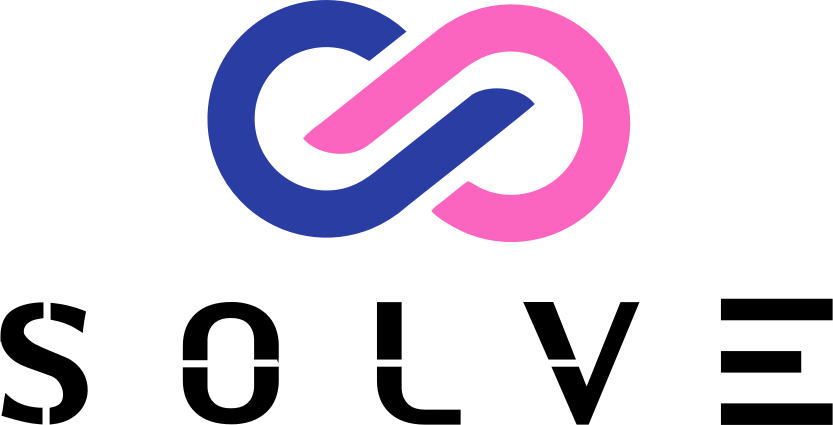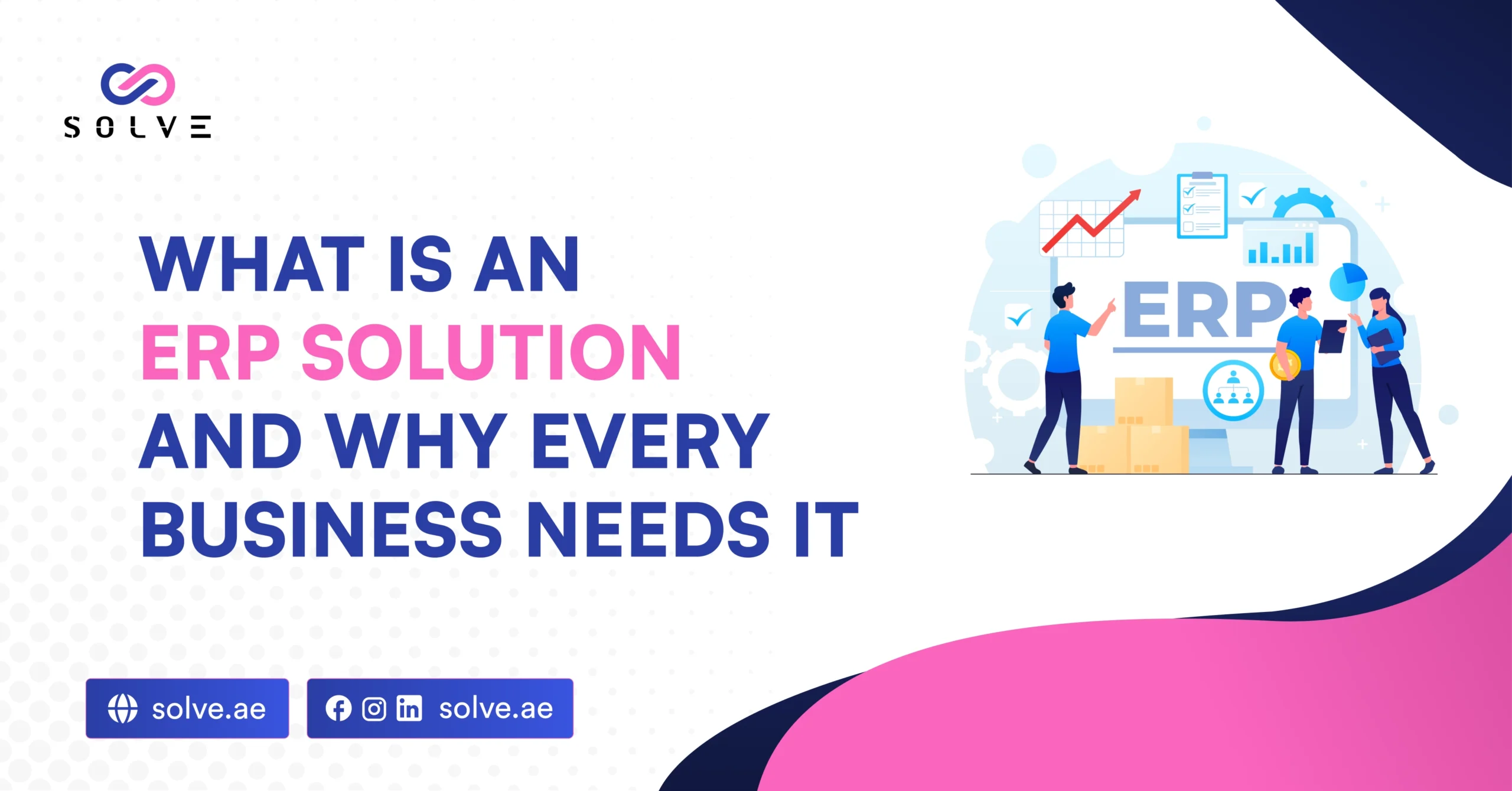- By Vanshika Choudhary
- October 10, 2025
Today, running a business is a very complex affair. At one end of the spectrum, managing money and having to keep track of employees, stocks, and clients—all the aforementioned cannot be done without proper control. Making mistakes, losing information, or just wasting time can result from an inadequate infrastructure. This is where ERP Solution, or Enterprise Resource Planning, comes in.
ERP Solution is a piece of software that allows the business to manage all its basic processes from a single point It makes the day-to-day running of a business easier, minimizes mistakes, and helps companies make the right decisions. So, whether you operate a small store or a large organization, the choice of ERP will always be a win-win situation in terms of time, money, effort, and business growth.
-
Understanding ERP: The Basics

Definition of ERP
Enterprise Resource Planning comes in the form of ERP. A software system is provided that brings together all the important business functions under one roof. No longer managing finance, HR, inventory, sales, and customer data separately, but with ERP, where everything is together, and operations are smooth. The main feature of this integration is that companies no longer need to rely on manual work; their accuracy will improve.
Key Components of ERP
Finance and Accounting: This module takes care of every aspect related to money. Expenses, invoices, budgets, financial reports—you name it, the finance module does it all. The company can instantaneously get a report on its cash flow, profits, and losses without having to perform a range of manual calculations. Furthermore, the module acts as the guardian of the company’s finances.
Human Resources (HR): The HR module takes care of all the paperwork as well as employee information, payroll, attendance, recruitment, and performance reviews. By storing all employee data in one central database, HR teams can easily monitor employee performance, manage payroll smoothly, and hire new employees without losing any important details.
Inventory Management: This module monitors stock levels, orders, and the overall supply management process. It guarantees that businesses will always have the correct quantity of products ready for selling, thus avoiding both overstocking and shortages. The precise counting of the inventories helps the companies to cut down on their costs and to serve the customers’ demand in an efficient way.
Supply Chain Management: The supply chain module is responsible for handling the procurement, managing suppliers, logistics, and the whole order fulfillment process. Companies are now able to keep an eye on the suppliers, speed up the purchase process, and deliver the products in a much shorter time. It not only increases the efficiency but also cuts down the production and delivery delays.
Customer Relationship Management (CRM): The CRM module monitors all customer interactions through sales and support requests. Thus, it keeps the business in a position where it can quickly respond to inquiries, actively follow up on leads, and keep good relationships with existing customers. A powerful CRM results in increased customer loyalty and happiness.
How ERP Works
There is a single integrated database for all the above modules, which means that all the information is saved in one system. The members of different departments can pull the latest data whenever they want. Tasks like updating stocks, invoicing, or sales tracking are done automatically; thus, the chances of mistakes are lower and time is being saved.
-
Core Features of an ERP Solution
Centralized Data Management
One of the main benefits of ERP is that it brings together all business-related data at a single point. So rather than having data distributed over various spreadsheets or systems, it gathers everything in one location where employees can very easily get the correct information and very quickly. Mistakes and double entries are thus avoided, and at the same time, all the operations of the departments can be monitored by the management very efficiently.
Automation of Processes
Automation is one of the main features that ERP provides. Every repetitive task falls under this category, e.g., billing, updating stock, maintaining payroll, and preparing the reports. Automation not only saves time but also minimizes human errors and hands over the less important tasks to the workers who are capable and interested in doing so, like providing better customer service or strategizing.
Reporting and Analytics
ERP, through real-time reporting and analytics, gives businesses the power to make wise and data-driven decisions. A manager can now monitor sales trends, control costs, or appraise the performance of employees instantly. The businesses now, instead of spending hours on manual report compilation, can get accurate insights with just a click of a button. Check out our latest blog post on How to Use Schema Markup for Better UAE Search Visibility
Scalability
ERP systems are design to changes in the business size. In case the company increases its manpower, introduces new products, or builds more outlets, ERP can smoothly take in the additional data and operations without any interruptions. So, the system will remain as good as new even when it is time for business changes.
Customization
Stored on a company’s servers, these kinds of solutions are considered to be more costly in terms of initial investment and maintenance expenses. However, they provide the business with greater control, better data security, and easy customization options. Many industries have very specific requirements for their ERP systems, and that could be the case for a company that manufactures high-end electronics. In such a case, it will be better with an on-premise ERP system.
Cloud ERP
Cloud ERP is also a type of ERP solution where the software is hosted and managed by the vendor on a public or private cloud rather than on-site. solutions are the most flexible in terms of access and scalability. They require low up-front costs compared to on-premise solutions and are generally easier to implement.
Hybrid ERP
A hybrid ERP combines both systems by hosting some parts on-premises and others in the cloud. It allows a company to take advantage of both systems and, at the same time, avoid their disadvantages. For instance, a company can store sensitive data on-premises and use the cloud for non-sensitive data, thus having a better and cheaper security system.
Conclusion
ERP solutions are no longer merely tools that only large corporations can use; they have become obligatory for all businesses, regardless of their size. ERP unites finance, HR, inventory, sales, and other essential processes into one system, thus helping companies to be more productive, cut down on mistakes, and make better decisions.
Additionally, Contact us as implementing an ERP system improves customer satisfaction, regulatory compliance, and interdepartmental communication. Together with process automation, real-time insights can help the company turn its attention back on expansion rather than monotonous work.




